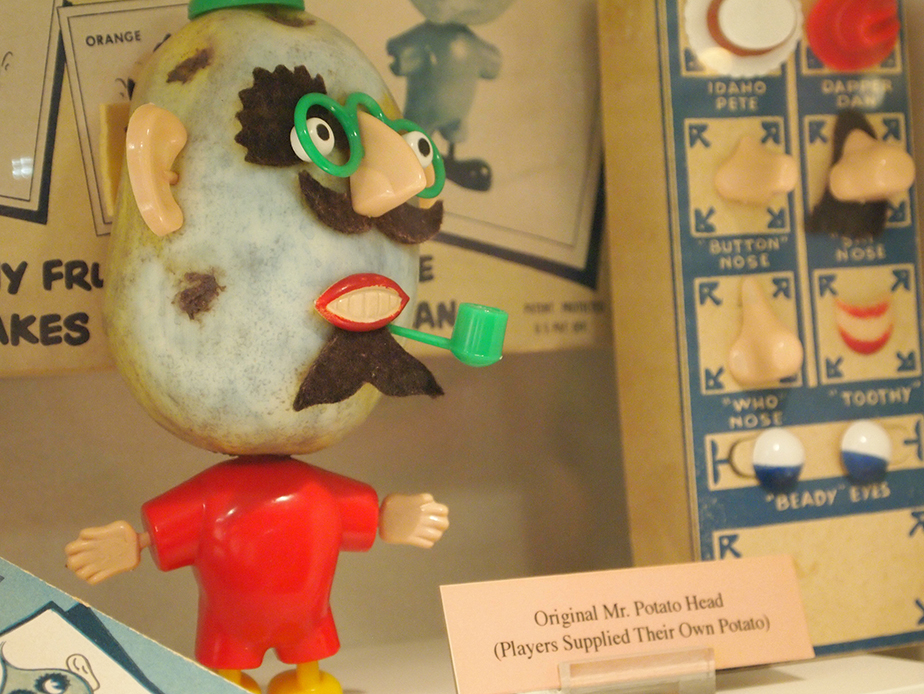
Mr. Potato Head has been a beloved toy for more than 50 years. He’s transformed a lot over time.
1949 A potato is born. George Lerner, a toymaker from New York, has the idea for a Mr. Potato Head toy. He makes parts that kids can stick into a real potato to make different faces.
Lerner takes his idea to toy companies, but they aren’t interested. So Lerner tries a cereal company and the cereal company likes it. It puts Mr. Potato Head parts in its cereal boxes. The Mr. Potato Head parts are a hit!
1952 Hasbro begins to sell Mr. Potato Head. Hasbro, a major toy company, begins to make and sell Mr. Potato Head. It only sells the parts; potatoes are not included. Hasbro also makes the first-ever toy commercial for TV that shows how kids can push the Mr. Potato Head parts into real potatoes or any other vegetable that they have at home. The Mr. Potato Head parts also include a body and legs.
1953 Mrs. Potato Head is born. Mr. Potato Head is so successful that Hasbro decides to produce and sell a Mrs. Potato Head as a companion for Mr. Potato Head.
1950s A growing family of potato heads. Hasbro introduces Potato Head children: Brother Spud and Sister Yam.
1964 Plastic potato now included. Hasbro includes a plastic potato with the parts. There are two reasons for this. The first is safety. Young children are choking on the small parts and cutting themselves on sharp edges. The second reason is that moms are complaining about finding rotten potatoes under their children’s beds! Yuck!
1975 The potato head family grows in size but loses its legs. Mr. and Mrs. Potato Head grow—literally. To meet new toy safety standards, Hasbro doubles the size of the plastic potatoes and the Potato Head parts. It also stops making Potato Head legs for the same reason. Now the Potato Heads are legless, but not footless.
1995 A star is born! Mr. Potato Head becomes a movie star. He stars in the movie Toy Story as well as in the sequels to the movie, Toy Story 2 and Toy Story 3.



 About BeeLine
About BeeLine